Ceiling Fan Bearing
₹468.00 Original price was: ₹468.00.₹390.00Current price is: ₹390.00.
Introduction to Ceiling Fan Bearings
Ceiling fan bearings are critical components that facilitate the smooth operation of the fan. These small yet essential parts play a pivotal role in reducing friction between moving parts, thereby allowing the blades to rotate seamlessly. The primary function of ceiling fan bearings is to support the rotor and help maintain the fan’s structural integrity, enabling it to operate efficiently over prolonged periods.
There are typically two types of bearings found in ceiling fans: sleeve bearings and ball bearings. Sleeve bearings are made from materials that create a smoother surface for the rotor to move against, which helps to minimize noise and vibration. On the other hand, ball bearings utilize small metal balls to reduce friction even further, offering a more durable option that generally lasts longer than sleeve bearings. Both types contribute significantly to the fan’s overall performance and lifespan, making their proper maintenance and timely replacement crucial for optimal functionality.
The efficiency of a ceiling fan is considerably influenced by the condition of its bearings. Well-maintained bearings not only enable quieter operation but also improve the fan’s energy consumption, ensuring it provides effective air circulation without unnecessary strain on the motor. Conversely, worn or damaged bearings can lead to increased noise levels and decreased performance, eventually causing the fan to malfunction. Hence, understanding the importance of these components is vital for anyone looking to maintain or enhance the performance of their ceiling fan.
In the context of ceiling fan maintenance, recognizing the signs of bearing wear and understanding the replacement process are essential steps for any homeowner. By prioritizing the upkeep of bearings, one can significantly enhance the longevity and efficiency of their ceiling fans.
Signs of Worn Out Ceiling Fan Bearings
Ceiling fan bearings play a crucial role in the overall functionality and efficiency of the appliance. Over time, it is common for these bearings to wear out, leading to several distinct signs that should not be overlooked. Spotting these indicators early can help prevent more significant issues and extend the life of your ceiling fan.
One of the most noticeable signs of worn-out bearings is the onset of unusual noises during operation. If you begin to hear grinding, squeaking, or any other abnormal sounds, it may signify that the bearings are deteriorating. These noises often indicate that the internal mechanics are struggling, which may prompt the need for maintenance or replacement.
Another prevalent symptom of bearing wear is excessive wobbling of the fan blades. While some movement is expected, if the fan begins to sway more dramatically, this imbalance can indicate that the bearings are compromised. This wobbling not only affects the aesthetic and functional appeal of the fan but can also lead to additional strain on the motor, potentially causing further damage.
Decreased airflow is another critical sign that indicates ceiling fan bearings may be experiencing wear. A well-functioning ceiling fan should circulate air efficiently. If you notice a reduced airflow despite the fan operating at the same speed, this decline can be directly linked to bearing issues that hinder the smooth rotation of the blades.
Diagnosing bearing problems should involve regular inspections of your ceiling fan to catch these signs early. Ignoring the symptoms can lead to increased energy consumption, higher utility bills, and ultimately, the need for a costly replacement. Regular maintenance checks are essential to ensure the longevity of your ceiling fan and the optimal performance of its components.
Maintenance Tips for Ceiling Fan Bearings
Maintaining ceiling fan bearings is essential for optimal performance and longevity. Regular upkeep not only enhances the efficiency of the fan but also prolongs the life of its components. One of the key maintenance tasks is cleaning the fan bearings. Dust and debris can accumulate over time, leading to increased friction and wear. It is advisable to regularly inspect the ceiling fan and clean the bearings using a soft cloth or brush to remove any build-up. For a deeper clean, a mild detergent solution may be used, but ensure that bearings are thoroughly dried afterward to prevent moisture-related issues.
Another critical aspect of maintenance is proper lubrication of ceiling fan bearings. Good lubrication reduces friction, allowing the fan to operate smoothly and quietly. Most manufacturers recommend applying a few drops of machine oil or a similar lubricant designed for electric motors. However, it is vital not to over-lubricate, as excess oil can attract dirt and dust, leading to further problems. Always refer to the manufacturer’s guidelines for the recommended lubrication schedule and type.
Moreover, ensuring that the ceiling fan is correctly installed plays a significant role in minimizing wear and tear on the bearings. An improperly installed fan may wobble or operate unevenly, putting additional stress on the bearings. Always confirm that the fan is mounted securely and is level. Periodically checking the mounting hardware for tightness can help maintain stability.
Incorporating these maintenance practices not only helps in preserving the function of ceiling fan bearings but also ensures that the fan operates at peak performance. Investing time in regular maintenance tasks can lead to significant benefits, including energy efficiency and reduced noise levels.
Replacing Ceiling Fan Bearings: A Step-by-Step Guide
Replacing ceiling fan bearings is a task that can significantly improve the performance and lifespan of your fan. Properly functioning bearings ensure that the fan operates smoothly and quietly, preventing potential noise and friction issues. To embark on this endeavor, there are a few essential tools you will need: a screwdriver set, pliers, a replacement bearing kit compatible with your specific fan model, and lubricating oil. Additionally, safety goggles and gloves are recommended to protect yourself during the procedure.
Before beginning the replacement process, ensure that the ceiling fan is powered off at the circuit breaker to prevent any electrical accidents. After confirming that the fan is off, it is advisable to detach the fan blades by unscrewing them from the motor hub. This action not only creates ease of access but also reduces any potential weight or balance issues while working solely on the motor.
Once the blades are removed, proceed to detach the motor casing by unscrewing it from the mounting bracket. With the casing removed, the rotor and old bearings should be accessible. Carefully pull the rotor out, taking care not to damage any electrical connections. Inspect the old bearings for wear and tear; if they are stiff or have noticeable damage, it is time to replace them.
To replace the bearings, gently remove the old ones using your pliers, making sure to avoid any harm to the surrounding components. Before installing the new bearings, apply a bit of lubricating oil for optimal performance. The new bearings should fit snugly; once they are in place, reassemble the fan by reversing the disassembly process. Finally, reattach the blades, restore power from the circuit breaker, and test the fan to ensure that it operates smoothly.
Selecting the right bearings is crucial for proper operation. Always refer to the ceiling fan’s manufacturer specifications when purchasing replacements, as different models may require specific types of bearings. By following these steps carefully, you can successfully replace ceiling fan bearings, ensuring prolonged efficiency and quieter operation.
Conclusion and When to Seek Professional Help
In wrapping up our exploration of ceiling fan bearings, it is essential to emphasize their critical role within the overall functionality of ceiling fans. The bearings, often overlooked, provide a smooth rotation for the fan blades, which directly influences airflow efficiency and noise levels. Regular maintenance, including cleaning and lubricating the bearings, can significantly prolong the lifespan of your ceiling fan while enhancing its performance. Neglecting these components can lead to more severe issues, such as excessive noise or complete operational failure, making proactive care vital for fan system sustainability.
When evaluating the state of your ceiling fan bearings, it is important to assess the extent of any issues you may encounter. If you notice any unusual noises, decreased airflow, or wobbling during operation, these could be indicators that the bearings require attention. Performing routine checks can help pinpoint such problems early, providing a chance for timely intervention which might only involve lubrication or adjustments. However, should the bearings exhibit severe wear or corrosion, replacement may be necessary.
If you find yourself uncertain about how to proceed with repairs or replacements, seeking professional help is advisable. Professionals have the expertise and tools at their disposal to diagnose the problem accurately and execute any necessary repairs safely. This option can save trouble and ensure your ceiling fan operates efficiently. Ultimately, maintaining your ceiling fan bearings not only enhances comfort through improved airflow but also protects your investment by minimizing repair costs associated with neglect or improper handling. Balancing DIY attempts and professional assistance is essential to effectively maintain your ceiling fan’s performance and longevity.
| Ceiling Fan Brand Name | aco, ACTIVA, Aervinten, AGE, AIRDEC, AIRELEC, Airhill, AKSHARA FAN, Almo, ALVIS, AMJ, Anchor By Panasonic, Aparna, Astra, Athots, Atomberg, ATUL, BAJAJ, befunky, BERLIA STEELS PVT LTD, Bevel, Bison, Blue Me, blue sun, BlueBerry's, Brighty, Candes, CG, Chief Marshal, cojo, Cosas, Cospex, Crompton, dakshrup, DAWAR, DIGISMART, DRUMSTONE, DV NOVAKING, EAGLE, ecotejas, Elevea, Elixxeton US, Emflux, Enamic UK, Engarc, Eskon, Eurostar, EVEREST, fest forever, Flipkart SmartBuy, FOUR STAR, GESTOR, GM, good choice, GRANTON, Halcyon, HANEUL, HANS LIGHTINGS, HARMAN INDUSTRIES, HAVELLS, HAWAFANS, Herrricane, Hi Choice, Hindware, IMPEX, Indigo, INNO ONE, Kanishka, Kenstar, kenvi us, Khaitan, Kimatsu, KOI, KUHL, KWW, kysa, Lalson's, Lazer, LionBolt, Longway, LONGWINGS, LUKER, LUMINOUS, Luton, luxer, MAKE LIFE BETTER, MARC, Max Speed, Maxotech, MAYA, MinMAX, MODI, Mokshi, Moonstruck, MOVIE STARS, NAVDEVI, Nex, oceco, OMEGA'S, OMEN, oremate+, oreole, Orient Electric, ORPAT, Orzinpro, OSTN, ottomate, Panasonic, Paras Green, Polar, Polycab, PROLIFE, QUALX, Raptas, RediGo, Relaxo, Revolta, Rhobos, RPM, RPM Airtech, Sameer, Sampri, Sansui, SATYA SUNDER, saveguard, SHATAK, SHIFY, silver king, Singer, sm luxury, Smuf, STANDARD, STAR JIVA, Stardom, STARSHINE, Summercool, SUMMERKING, Sun Flame, Sunflame, SUNGOLD, suniore, Superfan, SURYA, Sword, TechKing, THERMO KING, THERMOCOOL, TIFOZ, ULTICA, UltinoPro, UNIFAN, Urja Enterprise, USHA, V-Guard, vandana, ventum, Venus, VG, Vilaxo, vindian, VISRA, Voltcare, VRS, Willett, Xpert, ZENTAX, zigma, ZORIX, Zunpulse, ZunVolt |
|---|
Only logged in customers who have purchased this product may leave a review.
Related products
-
Ceiling Fan Parts
Ceiling Fan Remote Control
Rated 0 out of 5₹1,248.00Original price was: ₹1,248.00.₹1,040.00Current price is: ₹1,040.00. Select options This product has multiple variants. The options may be chosen on the product page -
Ceiling Fan Parts
Ceiling Fan Canopy
Rated 0 out of 5₹234.00Original price was: ₹234.00.₹195.00Current price is: ₹195.00. Select options This product has multiple variants. The options may be chosen on the product page -
Ceiling Fan Parts
Ceiling Fan Motor
₹1,560.00 – ₹2,160.00 Select options This product has multiple variants. The options may be chosen on the product pageRated 0 out of 5 -
Ceiling Fan Parts
Ceiling Fan Capacitor
Rated 0 out of 5₹234.00Original price was: ₹234.00.₹195.00Current price is: ₹195.00. Select options This product has multiple variants. The options may be chosen on the product page

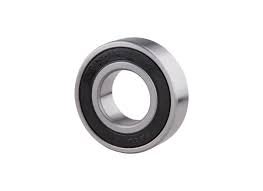
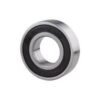
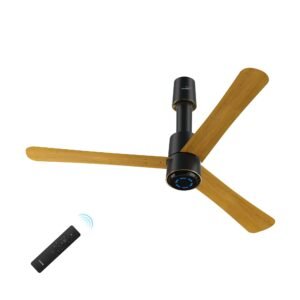
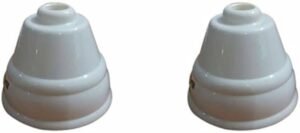
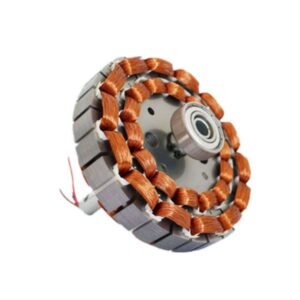
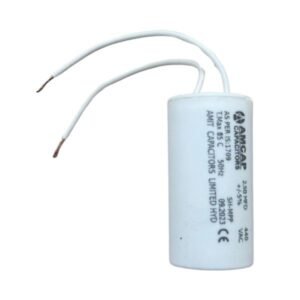
Reviews
There are no reviews yet.